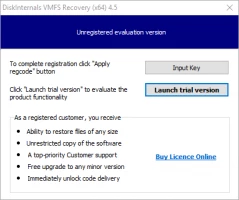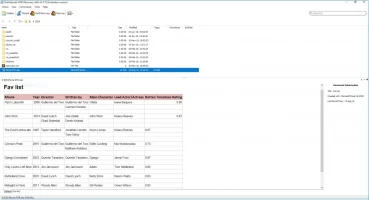3-2-1 Backup Strategy. What is the 3-2-1 Rule?
Data backup is an unavoidable requirement for today's businesses, but how should you go about developing a backup strategy or reevaluating an existing one? As DiskInternals examines the famous 3-2-1 data backup plan, you'll find the answers here.
What is a 3-2-1 Backup Strategy (backup rule)?
Justifying the requirement for data backup in today's business should be straightforward. Determining an organization's optimal backup strategy, on the other hand, may not be as straightforward. There are a plethora of hardware and software alternatives to pick from, as well as a plethora of proposed regulations and processes for using them.
Given this, it may surprise some that one of the most popular data backup solutions came from a creative professional — a photographer who developed a guideline by polling IT experts — rather than, as one might imagine, from an IT business or standards organization.

The 3-2-1 rule, which is credited to photographer Peter Krogh, consists of the following requirements:
- Maintain three copies of data: the original and at least two additional copies.
- 2 Separate Media — For storage, use two different media types. This can assist to mitigate any harm that could be attributed to a single storage medium type. It is up to you to decide which storage media will hold the original data and which will hold any extra copies.
- 1 Copy Offsite — Store one copy offsite to avoid data loss in the case of a site-specific failure.
Krogh devised his rule nearly two decades ago, when his personal storage choices comprised hard disks with a capacity of 30 gigabytes and compact disc backups.
The times have changed, and so has the technology accessible to us. Hard drives with storage capacities of up to 18 terabytes and a variety of cloud-based solutions are among the data storage alternatives available today.
Furthermore, today's data storage issues extend beyond disk capacity to include how a chosen system will manage numerous security and failover scenarios.
The 3-2-1 rule should be used as a starting point. Many organizations, on the other hand, require more than three copies of controlled data. Some people divide their data into one or more production, backup (perhaps on a different medium), and disaster recovery sets (potentially offsite). Others could have more specific needs, but the 3-2-1 rule is an excellent place to start.
The ability to run certain data analytics operations on the data copies (the data stored in backup or disaster recovery infrastructure) rather than the original data is another advantage of employing the 3-2-1 approach. Another advantage of this rule is that it allows for fine-tuning, in addition to its seeming simplicity.
3-2-1 Allows for Backup Versatility
Aside from fine-tuning the amount of backups, the rule provides for a broad variety of backup kinds within an organization's defined strategy, taking into account intended media types, locations, and so on. When it comes to backup settings, there are several factors to consider.
The following backup targets are supported:
- SAN (iSCSI and Fibre Channel)
- Object storage backup targets using Application Platform (AP)
Choosing alternative backup types might add to the value. Some people, for example, may decide to make an object-based backup from data that was not initially object-based. Depending on the performance, capacity, and cost requirements, various firms have varied storage objectives. Object storage is frequently used for secondary backup storage (cloud or on-premises object) and immutable backup storage due to its lower performance.
Beyond 3-2-1
Many businesses want even more customization of their data backup plans while sticking to the same 3-2-1 principles, resulting in a 3-2-1-#-#-#rule. Other considerations include whether an extra copy of the data should be stored offline (air-gapped) or whether additional recovery verification is required.
Implementing a 3-2-1 backup rule, as well as enterprise-level backup in general, requires the following considerations:
- Reliability
- Ease of Use
- Security
- Cost and Capacity
- Recovery Time Objective (RTO) and Recovery Point Objective (RPO)
- On-Premises vs. Cloud Backup Targets
- Data Integrity Protection
The 3-2-1 backup plan is a suitable place to start or alter a standard data backup policy for businesses. Regardless matter how many backups you need (over and beyond the first "3"), destination media (SAN, or object-based storage utilizing Application Platform), or location, this can help.
What else do you need for VM safety?
For data security, you will also need a VMware data recovery tool, VMFS recovery, VMDK file read and restore. DiskInternals VMFS Recovery has earned the trust of IT and forensic professionals over 15 years for its unrivaled performance.
The tool automatically checks the current state of VMFS datastores, disks, RAID (if used) and reads VMDK images and VMFS structures where possible, and subsequently recovers as much data as possible.
Before you start using the application, read the step-by-step guide to using DiskInternals VMFS Recovery:
- First download and install this application on your computer and start the recovery process.
- If necessary, connect via SSH, and thenopen a drive (local drive or SSH).
- Scan it and find the necessary VMDK files andmount the VMDK file.
- Open this file and use the preview function to check the integrity of the recovered data.
- The last and most important step is to obtain a license and export the data to another medium.



